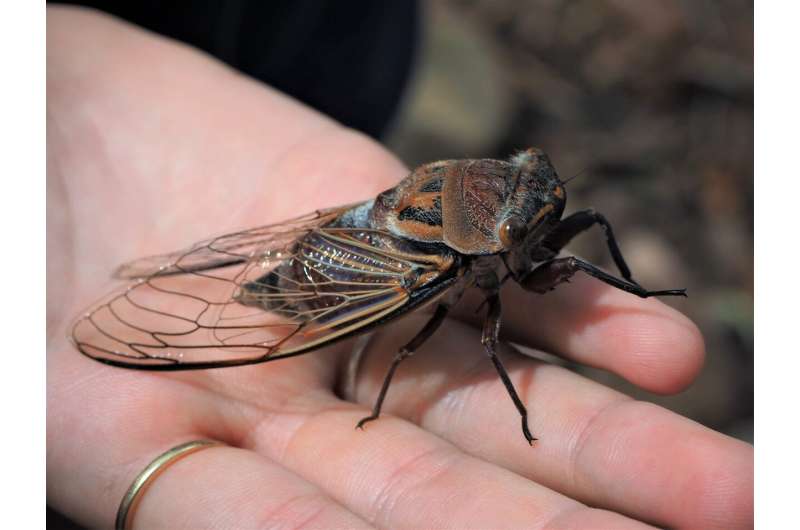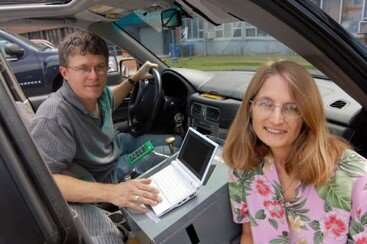It's nearly cicada census time

Cicada researchers, enthusiasts, and citizen scientists have an exciting few months ahead of them. is an opportunity to unite a summertime spectacle with new technology to help scientists study trends for this charismatic insect envoy.
UConn Ecology and Evolutionary Biology Professor Chris Simon and her lab studies periodical cicadas, with an interest in their molecular genetics and evolutionary biology. Her long-time collaborator, UConn Assistant Professor in Residence John Cooley, studies their behavior and ecology. Digging into these questions requires a firm understanding of their geographic distribution therefore the researchers need an accurate cicada census.
The processes for mapping and tracking cicadas has evolved over the years, but one thing has remained the same, says Cooley: "Crowdsourcing and citizen science have been parts of this story from the very beginning, going back to the 1600s."
It is a big task to track the millions of cicadas emerging every 13 or 17 years and whatever technology is available at the time has played a part in describing the phenomena, including written accounts, postcards, telegraph messages, phone calls, and more recently, email and an app.
With each innovation comes more data, which can be a mixed blessing, says Simon, recounting the data gathering for an emergence of Brood II in 1979.

"I published a story in Natural History Magazine out of the American Museum of Natural History. I got hundreds of letters and post cards from people, and then I had to go through all of those and answer them by hand. I used to have to contact every agricultural extension agent in every county a brood of cicadas occupied and ask them to gather information. I had to go to the county courthouse, meet the agent, pick up a map of each county, get the phone numbers and address for people who reported, and then drive around to each house or farm."
Simon points out that Cooley had an important hand in revolutionizing how cicadas are mapped.
"He invented an automated data logger and protocols for using it. Then he made a website where people could report sightings. We were finding records that we never knew about in the past. Before we were just marking things on maps by hand and it was difficult to translate that into a quality data," says Simon.
Cooley explains the resulting map is currently the most accurate, but it is still incomplete. However, the Cicada Safari app, developed by collaborator Gene Kritsky at Mount St. Joseph University, promises to further streamline and refine the process of producing more accurate maps.
"Many of the older maps suffer from the problem of lack of resolution. We like to say that they're at the county level, which means that if a county is tagged as having the cicadas in it, they may have been found anywhere in that county. Some counties are hundreds of square miles, and so a county level series of maps will suggest degrees of overlap between groups of cicadas that are not actually happening," Cooley says.
This is a case where the researchers note a misleading map is worse than no map at all.
Provided by University of Connecticut



















